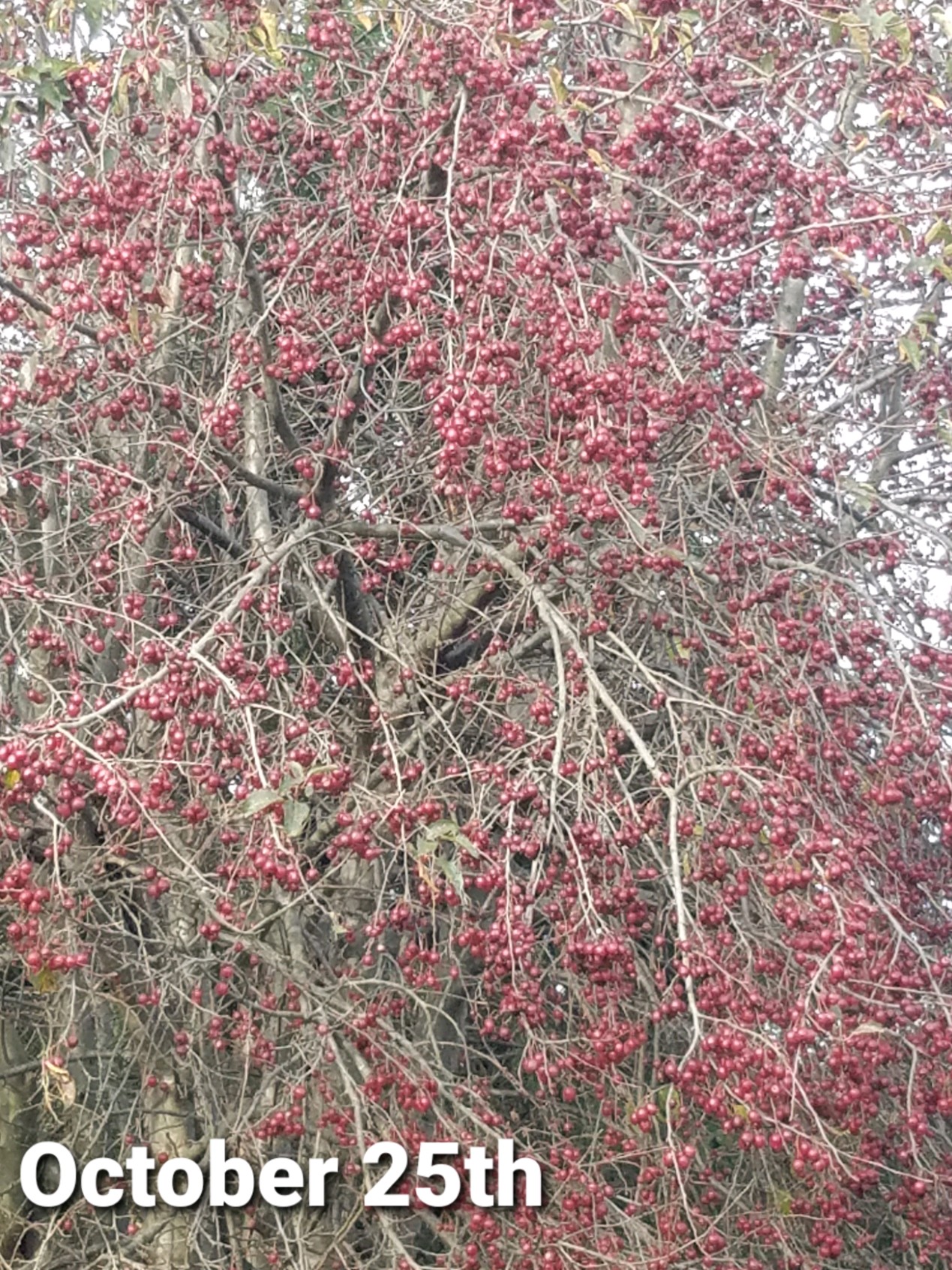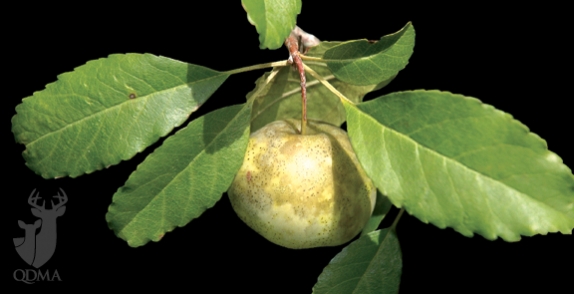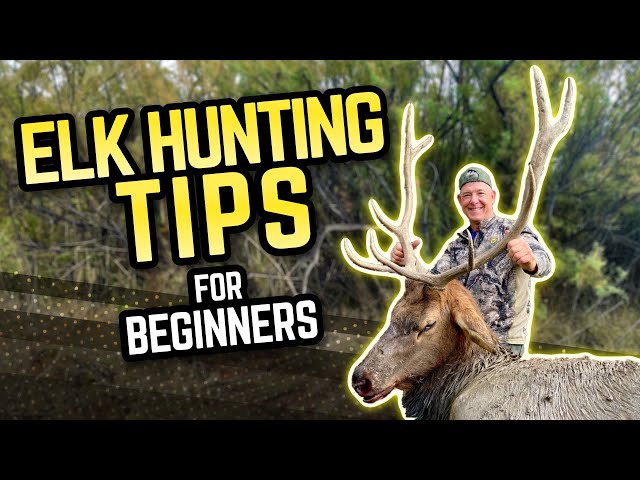Do Deer Like Crab Apples
Yes, deer are fond of crab apples due to their small size and sweetness. These fruits are a nutritious snack for various wildlife, especially in fall and winter.
Deer enjoy a diverse diet and crab apples fit perfectly into their preferences, especially when food sources become scarce. These small, tart apples provide vital nutrients and a quick energy source that deer find highly attractive. As crab apple trees are common in suburban landscapes and rural areas, deer often frequent these locations when the apples are ripe.
Gardeners and homeowners might notice deer visiting their crab apple trees, which can be both a delight for wildlife watchers and a challenge for those looking to protect their foliage. To cater to this natural behavior, some people plant crab apple trees strategically to lure deer away from other vegetation or for hunting purposes.
Understanding Deer Feeding Behavior
Exploring the dietary preferences of deer reveals a fascinating aspect of their survival strategy. Their feeding behavior varies with seasons, availability of food, and local habitat conditions. To fully appreciate why deer may have a penchant for certain fruits like crab apples, a deeper look into their herbivorous nature and fondness for natural sweet treats is essential.
Herbivorous Nature
Deer are herbivores, consuming a wide variety of vegetation to satisfy their nutritional requirements. Throughout the year, their diet consists of:
- Leaves from various trees and shrubs,
- Grasses, which are more prevalent in their diet during the warmer months,
- Acorns and nuts, particularly in the fall,
- Woody browse during the harsher winter months when other food sources are scarce.
Deer adapt their feeding patterns to the changing seasons, always in search of the most nutritious and accessible options.
Preferences For Fruits And Berries
Aside from their main diet, deer show a strong preference for fruits and berries when available. These foods provide:
- A significant energy boost due to their sugar content,
- Essential vitamins and minerals not always found in foliage,
- Hydration through their high water content.
Crab apples, in particular, are a delectable treat for deer. These fruits are:
| Aspect | Benefit to Deer |
|---|---|
| Size | Small and easy to consume |
| Nutritional Value | Rich in carbohydrates and dietary fiber |
| Availability | Often abundant in regions where deer populate |
Deer are therefore often seen feasting on these fruits whenever they come across a crab apple tree, especially in late summer and fall when the fruits are ripe.
Crab Apple Trees: A Delectable Buffet For Deer
For many of us, crab apple trees are a staple of picturesque gardens and parks, but for deer, they’re a source of delightful, nutritious feasting. These sturdy trees provide a cornucopia of small, tart fruits that deer find irresistible. With crab apples being so abundant, especially in the fall, it’s no wonder these trees become hotspots for wildlife activity.
Nutritional Benefits
Crab apple trees offer more than just a tasty snack; they are a powerhouse of nutrition for deer. As foragers, deer are always on the lookout for food sources that provide high energy and essential vitamins to keep them healthy throughout the year. Here’s a snapshot of the nutritional profile these fruits provide:
- Energy-Rich Carbohydrates: Essential for endurance, especially in colder months.
- Vitamins: A wealth of Vitamin C and Vitamin A bolster the immune system and vision.
- Minerals: Important for bone health and overall physiological functions.
- Fiber: Keeps the digestive system running smoothly.
Appeal Of Crab Apples To Deer
Crab apples are not only a nutritious treat for deer but also a preferred choice due to their palatability. Deer are attracted to these fruits for several reasons:
| Reasons for Attraction | Details |
|---|---|
| Sweetness | The natural sugars in crab apples make them a sweet delight amidst their usual, more bland diet. |
| Size and Abundance | Crab apples are the perfect bite-size fruit that deer can easily consume, often found in large quantities. |
| Availability | Crab apple trees produce fruit that remains accessible for deer even when other food sources are scarce. |
The allure of crab apples can be so strong that it’s not unusual to see deer frequenting areas with these trees and coming back year after year for their fruity feast.
Factors Influencing Deer Preference For Crab Apples
Exploring the relationship between deer and their snacking habits brings us to an intriguing topic. Crab apples, often overlooked, serve as a tantalizing treat for our antlered friends. While these miniature fruits might not be the first choice in our fruit bowls, for deer, they are a seasonal delicacy that varies in appeal. Let’s delve into the factors that influence deer preference for crab apples, from the bounty provided by the seasons to the competing snacks offered by Mother Nature.
Seasonal Availability
Deer behavior is heavily influenced by the changing seasons, and their diet is no exception. Crab apples typically become ripe between late summer and fall, a period when natural food sources become scarcer. During this time, deer will often seek out these fruits as a valuable source of nutrition. These factors highlight the significance of seasonal availability:
- Ripening period: The ripening of crab apples aligns with deer’s need to build fat reserves for winter.
- Attractiveness of the fruit: As crab apples ferment, they emit an aroma that entices deer.
- Feeding pattern adjustments: In preparation for leaner times, deer increase their foraging, making seasonally abundant crab apples a go-to food source.
Geographical Considerations
Not all deer habitats are created equal, and this is evident when comparing the geographical distribution of crab apple trees. Variations in climate, soil type, and flora diversity can affect the prevalence of crab apples across different regions. Deer in areas abundant with these trees may develop a particular taste for them due to increased exposure, while those in crab apple-scarce regions might not show the same preference. Consider the following:
- Tree distribution: Factors such as proximity to forests or orchards can make crab apples more readily available to local deer populations.
- Local climate: Areas with climates that favor crab apple growth will naturally have higher concentrations of deer that feed on them.
- Historical feeding habits: In regions where crab apples are traditionally plentiful, deer are more likely to include them in their diet.
Alternatives Within The Environment
The choices deer make when it comes to their diet can be likened to a diner perusing a menu; they will often go for what’s most appetizing and readily available. In ecosystems where alternative food sources are abundant, crab apples may not be the star of the show. Diverse habitats offer a variety of foods, such as acorns, hickory nuts, and various berries that can overshadow the humble crab apple. This is dependent on:
- Food source competition: The availability of more preferred food options can reduce deer interest in crab apples.
- Nutritional value: Deer will choose foods that meet their dietary needs, especially during gestation and antler growth periods.
- Taste preferences: Just like humans, deer have personal taste preferences, which can make certain foods more appealing than others, including crab apples.
Impact Of Deer Feeding On Crab Apple Trees
The serene image of deer roaming through orchards and nibbling on fallen fruits can mask an underlying threat to the health of crab apple trees. Crab apples, the smaller, wild cousins of cultivated apples, bear fruit that is a common food source for deer, especially in the fall and winter. As the deer make these trees part of their grazing routine, it’s essential to understand the complex Impact of Deer Feeding on Crab Apple Trees and implement effective strategies to protect these natural treasures.
Damage To Tree Health
Critical to the survival of crab apple trees is the avoidance of excessive damage. When deer feed on crab apples, they often do not limit themselves to the fallen fruits but also browse the tender shoots, leaves, and bark of these trees. This browsing can lead to a number of adverse effects:
- Interrupted photosynthesis because of leaf loss
- Slowed growth due to the depletion of stored nutrients
- Increased susceptibility to diseases and pests through open wounds
- Imbalanced tree structure, potentially leading to broken limbs
Particularly in the winter, when other food sources are scarce, deer may cause significant damage to young crab apple trees that are crucial for the generation of future orchards. The marks of deer feeding can be easily misinterpreted as pruning, but unlike careful human intervention, deer create ragged breaks that are less likely to heal properly.
Mitigating Strategies For Conservation
To protect crab apple trees from the voracious appetite of deer, several mitigation strategies can be employed. These strategies balance deer’s nutritional needs with the conservation of crab apple trees:
| Strategy | Description | Benefits |
|---|---|---|
| Physical barriers | Installation of fencing or individual tree shelters | Direct protection of trees; highly effective |
| Repellents | Application of taste or scent deterrents | Reduces deer browsing; easy to apply |
| Habitat modification | Altering the landscape to make it less attractive to deer | Long-term solution; promotes natural behavior |
| Controlled hunting | Regulated deer culling to manage population size | Immediate effect on deer pressure; benefits ecological balance |
By implementing these strategies, not only do we safeguard the future of crab apple trees, but we also encourage a healthier eco-system in which deer can coexist without the risk of over-foraging. Each method has its own set of advantages and can be tailored to specific environments and conservation goals.
Conservation And Management Strategies
Understanding that deer are naturally attracted to crab apples requires thoughtful conservation and management strategies. These strategies not only protect crab apple trees from over-browsing but also consider the well-being of the local deer population. A pragmatic approach balances the goals of wildlife preservation with the cultivation and health of crab apple trees.
Fence Installation For Protection
Physical barriers are a direct method to shield crab apple trees from deer. Installing fences serves as an effective line of defense:
- Height: Since deer can jump high, fences need to be at least 8 feet tall to be effective.
- Material: Various materials such as wire, wood, or mesh can be used depending on the specific needs and aesthetic preferences.
- Design: Consider adding angled extensions to increase the challenge for deer attempting to penetrate the fenced area.
- Maintenance: Regular checks are crucial to ensure the integrity of the fence and to address any damages that might allow deer to enter.
Deterrents And Repellents
In situations where fence installation is impractical, odor-based repellents and tactile deterrents can be employed:
- Natural Repellents: Use garlic clips, soap bars, or predator urine to create an unpleasant environment for deer.
- Commercial Repellents: Apply these according to the manufacturer’s directions for best results, usually requiring reapplication after rain or irrigation.
- Tactile Deterrents: Objects that move, make noise, or create an uncomfortable surface can discourage deer from approaching.
Balancing Wildlife Preservation With Tree Cultivation
Conservation efforts must consider the needs of wildlife alongside those of plant cultivation. Here are essential considerations to create a balance:
| Habitat Management | Tree Protection |
|---|---|
| Enhance nearby natural areas to divert deer from cultivated spaces. | Use tree guards or shelters for young saplings. |
| Maintain a diverse ecosystem to support a variety of wildlife, reducing pressure on crab apple trees. | Prune lower branches to make trees less accessible to deer. |
| Implement controlled hunting or fertility control measures where overpopulation is an issue. | Encourage growth of competitive native plant species that are less appealing to deer. |
Employing these strategies helps to maintain a sustainable environment where crab apple trees can thrive without negative impacts from deer over-browsing, ensuring a harmonious coexistence between flora and fauna.

Credit: bluehillwildlifenursery.com
Frequently Asked Questions On Do Deer Like Crab Apples
Do Deer Consume Crab Apple Fruits?
Deer do enjoy eating crab apples. Crab apples, despite their tart flavor, are consumed by deer, especially in late fall or winter when food is scarce. This fruit provides a valuable food source for deer when other options are limited.
Will Crab Apple Trees Attract Deer?
Yes, crab apple trees can attract deer. The fruit’s strong scent and nutritional value make them a desirable target, drawing deer into gardens and orchards. This can benefit wildlife watchers but may also pose a challenge for tree owners seeking to protect their harvest.
How Frequently Do Deer Eat Crab Apples?
The frequency varies but deer will often eat crab apples as they become available. During the autumn and early winter, when the fruits drop, deer may visit these trees regularly to feed on the readily accessible, energy-rich fruit.
Are Crab Apples A Preferred Food For Deer?
Crab apples aren’t deer’s first choice, but they are a favored option when preferred foods like tender leaves and shoots are unavailable. Deer diets adapt to seasonal changes, making crab apples an important fallback food source.
Conclusion
As we’ve explored, deer have a fondness for crab apples despite the fruit’s tartness. These adaptable creatures enjoy the nutritional benefits, ensuring crab apples are a worthy inclusion in your wildlife-friendly garden. Remember, planting crab apples can attract deer, providing a delightful spectacle for any nature enthusiast.
With their beauty and benefits, these trees make a charming addition to a deer’s diet and your landscape.




